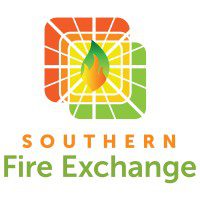Events
Science x Forests USFS webinar series
Webinar recordings. Monday, November 14 SCIENCE x Forests: Silviculture for the present and future A compendium of silviculture treatments for forest types in the United States: Silviculture guidance to support modeling, scenario planning, and large-scale simulations, presented by Thomas Schuler Prescribed burning considerations following mechanical treatments, presented by Sharon Hood Reforestation in an era of…
The hydrology of western juniper in central Oregon
Webinar recording. Dr. Carlos Ochoa’s research focuses on connections between ecohydrological processes and human interactions in an ever-changing climate. Dr. Ochoa has numerous research projects, one of which is a long term study in central Oregon that has provided critical information regarding vegetation and hydrology interactions in western juniper dominated landscapes. This presentation will discuss…
Communication strategies for range professionals – A webinar series
Webinar recording. How will you deliver your message to the right people? Rangeland professionals know a lot about rangeland ecology and management, but not about marketing, especially online communication. Online communication is here to stay, investing time now to learn more about it will prepare you for the future.
Considering equity in wildfire risk and protection
Webinar recording. Description: This webinar will summarize recent research examining the equity implications of rising wildfire risk and associated costs, including insurance coverage and the comparative costs for risk management activities in populations with different incomes. Presenter: Matthew R. Auer; The University of Georgia School of Public and International Affairs
Increases in large wildfire driven nighttime fire activity observed across the conterminous US
Webinar recording. This presentation discusses the results of 17 years of active fire data from Moderate Resolution Imaging Spectroradiometer (MODIS) to characterize the daytime and nighttime dynamics of wildfires across the continental US. Whereas daytime fire activity was widely detected regardless of fire type, nighttime fire activity was mainly detected inside wildfires and particularly within…
Geo-Fencing Summit
Day 1 Recording Day 2 Recording Summit hosts: Matt Reeves – Rocky Mountain Research Station and Dwayne Rice – Region 2 Rangeland Program Manager Background: Geo-fencing provides some unique advantages over conventional fencing approaches. This is especially true when we consider the devastation to fencing, and other rangeland infrastructure, caused by wildfires. Geo-fencing is increasingly…
Geomorphic recovery and post-fire flooding implications following the 2019 Museum Fire
Webinar recording. The 2019 Museum Fire burned nearly 2,000 acres of steep forested terrain abutting Flagstaff city limits in northern Arizona. In addition to the immediate fire danger, post-fire flooding posed a significant threat to the downstream community and critical infrastructure, prompting a multi-agency cooperation to evaluate post-fire runoff and geomorphic change during the recovery…
Fire and wildlife
Webinar registration. The good, bad, and ugly of fire and wildlife - roasty toasty critters or promoting sustainable habitat for expanding and healthy wildlife populations? Let’s discuss the pros and cons of fire on wildlife. How is the lack of fire at the necessary scale, frequency, intensity/severity, and seasonality one of the greatest threats to…
Leveraging LANDFIRE to understand ecological conditions across National Forests and Grasslands
Webinar recording. US Forest Service Ecologist, Sarah M. Anderson explains the Terrestrial Condition Assessment and how LANDFIRE products have informed the TCA. Sarah fields questions ranging from using the TCA to monitor ecological conditions, wildfire severity/fire deficits, KPIs in the USFS, and what it might take to move the needle on forest restoration.



